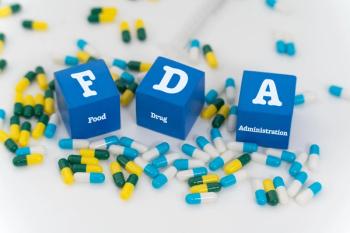
Pharmacy Screening Can Identify Depression in Older Adults
Normalizing conversations around mental health in older adult populations can improve outcomes.
A pharmacist-led screening program for late-life depression can help identify and refer patients to mental health resources, according to results from the EMPATHISE pilot study published in the Journal of the American Pharmacists Association.1
Depression in older adults is currently underdiagnosed, so the researchers hope that their program can improve treatment rates for this population. Many patients see their pharmacists more frequently than other providers, presenting an opportunity for early intervention.
The prospective pilot study included community pharmacies in New South Wales, Australia. The researchers trained pharmacists and pharmacy staff to identify signs and symptoms of late-life depression and use the Geriatric Depression Scale-15 (GDS-15).
Recruited patients were aged 65 years or older, and those who scored 6 or more on the GDS-15 were referred to other healthcare providers. Pharmacists followed up with patients after 1 week, and the researchers followed up with patients after 6 weeks. After the completion of the study, the researchers conducted semi-structured interviews with the pharmacists and patients to assess the program’s acceptability and outcomes.
A total of 113 participants (99 pharmacists and 14 pharmacy staff) were recruited from 39 pharmacies. In 8 pharmacies, participants screened a total of 15 patients (67% women). After completing screenings, 12 patients (80%) were referred to other healthcare professionals. Of those who completed referrals, 1 patient-initiated
READ MORE:
Participants indicated that the most common reasons they chose to screen patients were current diagnosis of chronic illness (n=11), social isolation risk (n=11), and polypharmacy status (n=9). Several patients (n=3) initiated the screening when they asked the pharmacist about mental health issues.
After completion of the program, 6 pharmacists and 5 patients participated in interviews via telephone. The pharmacists noted that the existing relationships between pharmacist and patient can help facilitate late-life depression screenings; pharmacists see their patients on a more regular basis than many other health care providers. However, participants noted that lack of time was the most significant challenge in screening patients.
Both participants and patients reported patient preference for discussing mental health issues with physicians, which presented another barrier to screening services. Both participants and patients also noted that those who are struggling with their mental health are often unwilling to admit it and thus refuse help.
As a way to increase engagement with screening services, the pharmacists recommended integrating them into existing pharmacy services like blood pressure checks.
Overall, despite some challenges, pharmacists responded positively to both the training and pilot program. They reported increases in comfort and confidence when screening for late-life depression.
This study is the first pilot program of late-life depression screening in community pharmacies, and it does suffer from some limitations. The number of participants and patients were small, and participating pharmacies were limited to a small geographical area. Still, the study shows the promise of pharmacy-led mental health screenings.
“Study findings highlight the need to normalize mental health conversations in older adult populations and may inform future studies on service delivery models to support the early identification and treatment of [late-life depression],” the researchers wrote.
READ MORE:
Reference
1. Gide DN, El-Den S, O’Donnell LK, et al. Establishing mental health friendly pharmacies to assist in the early identification and support of older adults at risk of depression: The EMPATHISE pilot study. J Am Pharm Assoc. 2024;64:e102199. doi:10.1016/j.japh.2024.102199.
Newsletter
Pharmacy practice is always changing. Stay ahead of the curve with the Drug Topics newsletter and get the latest drug information, industry trends, and patient care tips.













































































































































































































